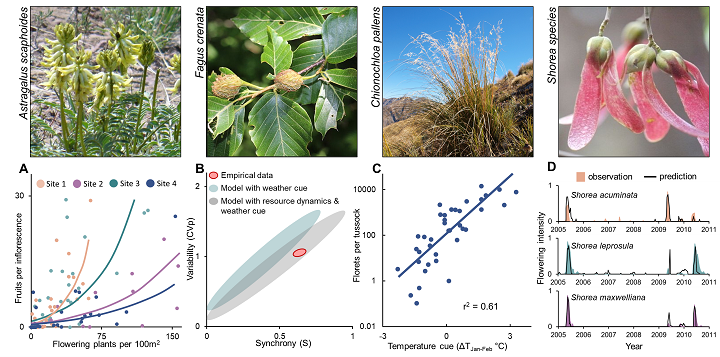Our recent paper on mast seeding in perennial plants presents a model that integrates proximate factors (environmental variation, weather cues, resource budgets) with ultimate drivers (predator satiation, pollination efficiency). This model illustrates how the relationships between mast seeding and weather influence species’ responses to climate warming, ranging from no change to reduced interannual variation or reproductive failure. The role of environmental prediction as a driver of mast seeding is being reassessed; future studies need to estimate the accuracy of these predictions and the benefits they confer. Understanding how mast seeding adapts to shifting environmental conditions is now a central question in plant adaptation to climate change.
TREE: general model of masting

